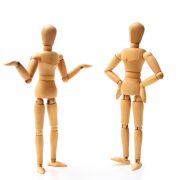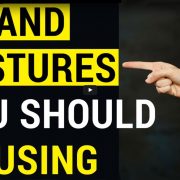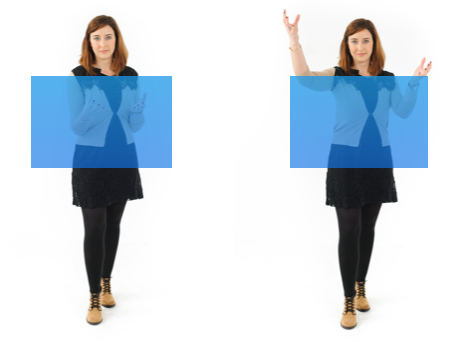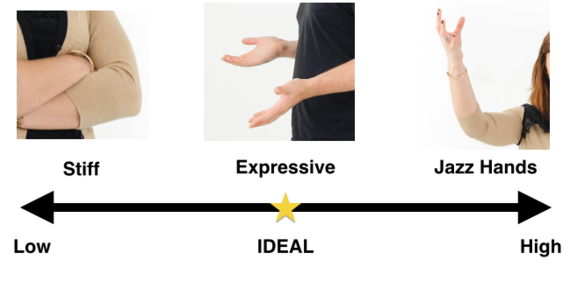Charisma allows you to command a room, draw others to you, and convince people of your ideas. It’s an essential part of being the kind of leader who wins devoted followers who are willing to go to the ends of the earth for you. Charismatic men are perceived as both likeable and powerful, a dynamic, irresistible combination that opens endless doors to them. Here is a video featuring 5 Habits of Exceptionally Charismatic People:
Habits of Exceptionally Charismatic People
Far from being a magical and inexplicable trait, charisma is be broken down into a set of concrete, largely nonverbal behaviors that can be learned, practiced, and made natural. Olivia Fox Cabane, author of The Charisma Myth, places these behaviors into three categories: Presence, Power, and Warmth. When deftly combined, these three components produce strong personal magnetism.
It’s incredibly easy to set yourself apart from the pack simply by being fully present with people and giving them your complete attention. When you think of charisma, you might think of trying to make yourself seem super awesome to others. But the paradoxical secret of charisma is that it’s not about trumpeting your good qualities, but making the other person feel good about himself. Real charisma makes the other person feel important. When they finish an interaction with you, they should feel better about themselves than they did before.
Focusing your mental and emotional energy on someone as you interact is how you create that feeling of importance. People fundamentally want attention – they want to be recognized and acknowledged.
Conveying presence is a simple concept, but oftentimes difficult to actually achieve. You can’t just fake it. People are surprisingly adept at deciphering your feigned interest. To truly convey presence, you must actually be present. It takes a significant amount of willpower to focus all your attention on the person you’re with at the moment. But like all things, with practice, it becomes significantly easier.
Here are some tips written by Brett & Kate McKay on developing your charismatic presence:
Bring yourself to the here and now.
Presence begins in your mind. If you feel like your mind is off somewhere else while engaging with someone, try this little exercise to bring you back to the here and now. Focus on physical sensations in your body that you often ignore. It could be your breath or it could be the sensation of your feet touching the ground. You don’t have to spend very long meditating on these sensations. Just a second or two will bring you back into the moment you’re sharing with this person.
Make sure you’re physically comfortable.
It’s hard to be fully present with someone when all you’re thinking about is how uncomfortably tight your pants are or how hot it is. To that end, do what you can to ensure you’re as comfortable as possible.
Set your devices on silent and put them out of sight.
This serves two purposes. First, it reduces the temptation for you to check them while you’re engaging with someone. Second, it sends a strong message to the person you’re with that they have your complete attention and they’re not sharing it with the smartphone placed on the table.
Look the person in the eye when they’re talking.
Numerous studies show that people who make higher levels of eye contact with others are perceived as possessing a load of desirable traits, including warmth, honesty, sincerity, competency, confidence, and emotional stability. Eye contact imparts a sense of intimacy to your exchanges, and leaves the receiver of your gaze feeling more positive about your interaction and also more connected to you.
Nod to show that you’re listening.
Besides eye contact, an easy way to convey presence is through body language, and more specifically, nodding your head. But be judicious with the noggin nods. An over abundance can indicate you’re trying too hard to please and agree with the person, which decreases their perception of your power. Also, only nod at appropriate times; you’ll need to be truly listening to know when a nod makes sense.
Ask clarifying questions.
An easy way to show someone that you’re completely there with them is to ask clarifying questions after he or she has spoken. For example, you could ask, “When you say ________, what exactly do you mean?” Another great clarifying question comes to us from Dr. Stephen Covey’s The Seven Habits of Highly Effective People. Basically, you paraphrase what the person just said and add, “Am I understanding you correctly?” In more casual conversations, ask questions like, “What was your favorite part of that?” or “What was the hardest part of that for you?” For more info on how to ask questions that show you’re really listening, click here.
Don’t fidget.
Fidgeting signals to the other person that you’re not comfortable or content and that there’s somewhere else you’d rather be. Don’t twiddle your thumbs or your phone. And avoid looking around for what else is going on, which signals to the other person that you’re searching for a better opportunity than your current one.
Listen, don’t think about how you’re going to respond.
We all have a tendency to do this. Our inner conversational narcissist wants to be ready to jump in and start talking as soon as there’s an opening. But if you’re thinking about what you’re going to say, you’re obviously not fully listening to what the other person is saying.
Wait two seconds before responding.
Breaking in the very instant a person pauses or stops talking signals to them that you were thinking about what you were going to say instead of fully listening to them. Nonverbal behaviors are more powerful than verbal ones, so use this trick. When someone has spoken see if you can let your facial expression react first, showing that you’re absorbing what they’ve just said and giving their brilliant statement the consideration it deserves. Only then, after about two seconds, do you answer.
The sequence goes like this:
- They finish their sentence
- Your face absorbs
- Your face reacts
- Then, and only then, you answer
Read the full article here>>
Want to learn how to be charismatic? Go to ScienceofPeople.com







 Ron Gutman/Entrepreneur
Ron Gutman/Entrepreneur





